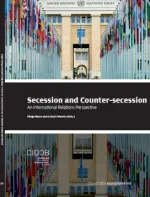Introduction. Secession and Counter-secession

In 1945, there were 74 independent countries. Today there are 195. The breakup of colonial empires, the collapse of the Soviet Union, and various secessions all over the world have led to the creation of numerous new sovereign states since World War II. Historically, the expansion and contraction of states has resulted from the competition between two living forces: secessionism and counter-secessionism.
.Secession is the “detachment of a territory from an existing state with the aim of creating a new state on the detached territory” (Pavkovic & Radan, 2011). By contrast, counter-secession could be defined as an attempt to prevent the break-up of states as well as their recognition by other states at the international level. Movements of secession and counter-secession compete and frequently clash over the formation of new states and one of the goals of this book is to understand the strategies of actors in favour of changing political borders as well as the reactions of those who want to prevent the break-up of states.